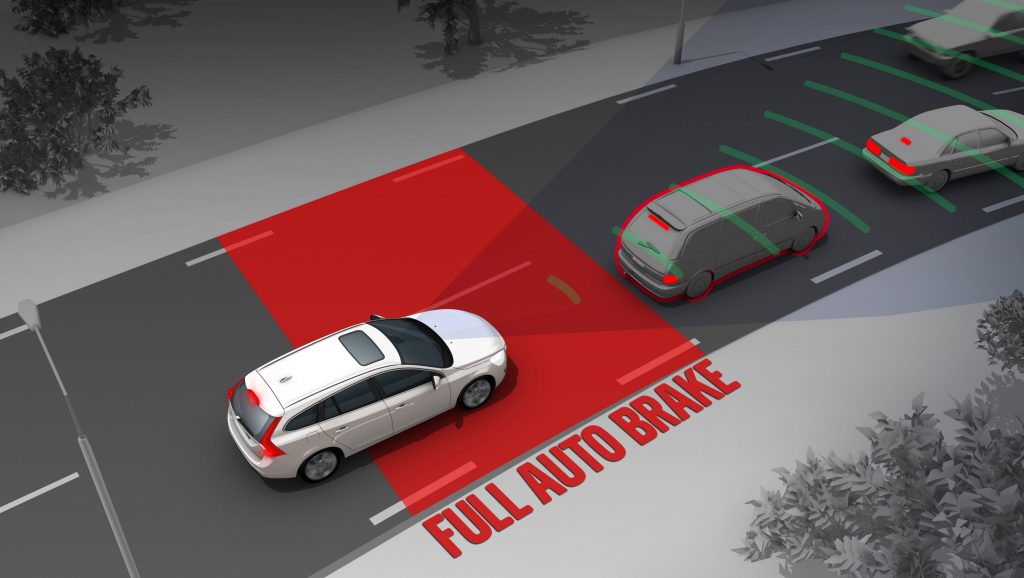The automotive sector is experiencing a technological revolution, with safety innovations playing a critical role in reducing accidents and saving lives. Advanced safety systems are now a key selling point for modern vehicles, offering both peace of mind and enhanced driving experiences. These advancements not only help prevent collisions but also protect occupants during accidents. In this article, we explore five groundbreaking safety features that are transforming the way we drive and setting new standards for vehicle safety.
1. Autonomous Emergency Braking (AEB)

Autonomous Emergency Braking has emerged as a game-changer in accident prevention. AEB systems use sensors, cameras, and radar to monitor the road ahead for potential collisions. If the system detects an imminent crash and the driver doesn’t react in time, it automatically applies the brakes to either mitigate or completely avoid the impact.
AEB technology is particularly effective in reducing rear-end collisions, which are among the most common types of road accidents. According to studies, vehicles equipped with AEB have significantly lower crash rates. Advanced versions of AEB can even detect pedestrians and cyclists, enhancing safety for vulnerable road users. As this technology becomes more widespread, it’s set to become a standard feature in new vehicles across all price ranges.
2. Lane-Keeping Assist (LKA) and Lane Departure Warning (LDW)
Lane-Keeping Assist and Lane Departure Warning are pivotal in reducing the risk of lane-drift accidents. Lane Departure Warning systems alert drivers when their vehicle unintentionally veers out of its lane, while Lane-Keeping Assist actively steers the car back into the correct lane.
These systems rely on cameras that detect lane markings and track the car’s position. If the driver drifts without signaling, the system provides visual, auditory, or haptic alerts. Lane-Keeping Assist takes this a step further by gently correcting the steering to maintain proper lane positioning.
Such features are especially useful for long-distance drivers, helping to combat fatigue-related accidents. They also enhance safety in low-visibility conditions, such as during heavy rain or fog. With continuous improvements in these technologies, lane-drift-related crashes are becoming increasingly rare.
3. Blind Spot Monitoring (BSM) and Rear Cross-Traffic Alert (RCTA)
Blind Spot Monitoring and Rear Cross-Traffic Alert have revolutionized the way drivers handle potential hazards in areas they can’t see. Blind Spot Monitoring systems use radar sensors to detect vehicles in adjacent lanes that may not be visible in the side mirrors. When another car enters the blind spot, the system warns the driver with an indicator light or audible alert.
Rear Cross-Traffic Alert, on the other hand, is a lifesaver when reversing out of parking spaces or driveways. It uses sensors to detect approaching vehicles or pedestrians from the sides and issues warnings to prevent collisions. These features are especially beneficial in crowded urban environments, where visibility can be limited by other vehicles or obstacles.
By reducing the likelihood of side-impact and rear-end collisions, BSM and RCTA contribute significantly to overall road safety. These technologies are now becoming standard even in compact and mid-range vehicles, making advanced safety more accessible.
4. Adaptive Cruise Control (ACC) with Stop-and-Go Functionality
Adaptive Cruise Control takes traditional cruise control to the next level by automatically adjusting the car’s speed to maintain a safe following distance. Using radar and cameras, ACC monitors the speed and distance of the vehicle ahead. If the leading car slows down, the system reduces the speed of your vehicle accordingly. Once the road clears, ACC resumes the preset speed.
Modern versions of Adaptive Cruise Control also feature Stop-and-Go functionality, which is particularly useful in traffic jams. The system can bring the car to a complete stop when traffic halts and resume driving automatically when it moves again. This reduces driver fatigue in stop-and-go traffic and ensures smoother, safer driving.
ACC not only improves safety but also enhances fuel efficiency by maintaining consistent speeds. It is especially beneficial for long highway drives, reducing the risk of rear-end collisions caused by sudden braking or acceleration.
5. Advanced Driver Assistance Systems (ADAS) with AI Integration

Advanced Driver Assistance Systems represent the pinnacle of modern vehicle safety. These systems encompass a suite of technologies, including traffic sign recognition, driver attention monitoring, and automatic high beams, to name a few. With the integration of artificial intelligence, ADAS can analyze vast amounts of data in real time, making driving safer and more intuitive.
One standout feature within ADAS is driver monitoring systems, which use cameras to observe the driver’s facial expressions and eye movements. If signs of drowsiness or distraction are detected, the system alerts the driver to take a break. Traffic sign recognition, another vital component, ensures drivers stay informed about speed limits and other road signs, even in unfamiliar areas.
AI-powered ADAS can predict and prevent accidents by analyzing complex driving scenarios and offering timely warnings or interventions. As these systems become more refined, they pave the way for fully autonomous vehicles, where human error is minimized, and road safety reaches unprecedented levels.
The Future of Automotive Safety
The innovations highlighted above represent just a glimpse of the ongoing revolution in automotive safety. With rapid advancements in technology, we can expect even more sophisticated systems in the near future, including vehicle-to-vehicle communication, enhanced night vision, and fully autonomous driving capabilities. These developments will not only make driving safer but also reduce the stress associated with navigating busy roads.
Furthermore, regulatory bodies and automakers are working together to make these technologies more accessible. As a result, cutting-edge safety features are no longer exclusive to luxury vehicles but are becoming standard across a wide range of models. This democratization of safety tech ensures that drivers and passengers alike benefit from these life-saving innovations.
Conclusion
The automotive industry is undergoing a transformative era, driven by groundbreaking safety technologies designed to protect drivers, passengers, and pedestrians. From Autonomous Emergency Braking to AI-powered Advanced Driver Assistance Systems, these innovations are setting new benchmarks for road safety. By adopting vehicles equipped with these cutting-edge features, drivers can enjoy a safer, more confident driving experience. As technology continues to evolve, the future of road safety looks brighter than ever, promising fewer accidents and more lives saved.

Leave a Reply